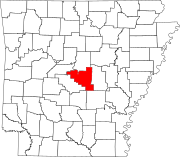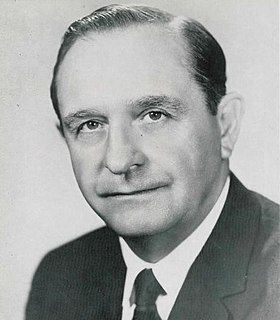
Orval Eugene Faubus was an American politician who served as the 36th Governor of Arkansas from 1955 to 1967, as a member of the Democratic Party.
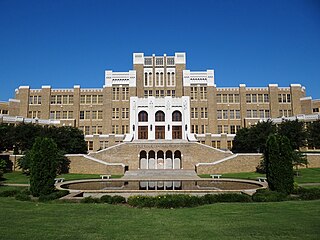
Little Rock Central High School (LRCHS) is an accredited comprehensive public high school in Little Rock, Arkansas, United States. The school was the site of forced desegregation in 1957 after the U.S. Supreme Court ruled that segregation of public schools was unconstitutional three years earlier. This was during the period of heightened activism in the civil rights movement.
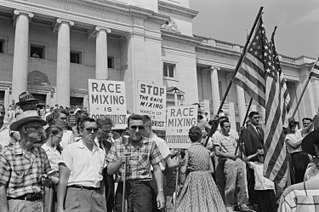
The Women's Emergency Committee to Open Our Schools (WEC) was an organization formed by a group of socially prominent white women in the city of Little Rock, Arkansas during the Little Rock Crisis in 1958. The organization advocated for the integration of the Little Rock public school system and was a major obstacle to Governor Orval Faubus's efforts to prevent racial integration. The women spoke out in favor of a special election to remove segregationists from the Little Rock school board.

Elizabeth Ann Eckford is one of the Little Rock Nine, a group of African-American students who, in 1957, were the first black students ever to attend classes at the previously all-white Little Rock Central High School in Little Rock, Arkansas. The integration came as a result of Brown v. Board of Education. Eckford's public ordeal was captured by press photographers on the morning of September 4, 1957, after she was prevented from entering the school by the Arkansas National Guard. A dramatic snapshot by Johnny Jenkins of the United Press (UP) showed the young girl being followed and threatened by an angry white mob; this and other photos of the day's startling events were circulated around the US and the world by the press.

Daisy Bates was an American civil rights activist, publisher, journalist, and lecturer who played a leading role in the Little Rock Integration Crisis of 1957.

Lawrence Brooks Hays was an American politician who served as a Democratic member of the United States House of Representatives from the State of Arkansas and a former president of the Southern Baptist Convention.
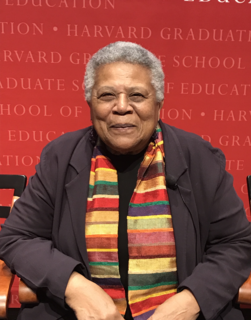
Minnijean Brown-Trickey is an American political figure who was a member of the Little Rock Nine, a group of nine African American teenagers who integrated Little Rock Central High School. The integration followed the Brown v. Board of Education decision which required public schools to be desegregated.
Ronald Norwood Davies was a United States District Judge of the United States District Court for the District of North Dakota. He is best known for his role in the Little Rock Integration Crisis in the fall of 1957. Davies ordered the desegregation of the previously all-white Little Rock Central High.

Melba Joy Pattillo Beals is an American journalist and educator who was a member of the Little Rock Nine, a group of African-American students who were the first to integrate Little Rock Central High School in Little Rock, Arkansas.

Thelma Mothershed-Wair is the eldest member of the Little Rock Nine group who attended Little Rock's Central High School following the 1954 Brown vs. Board of Education court case. The Little Rock Nine was a group of nine African American students enrolled in Little Rock Central High School in 1957. Their enrollment was followed by the Little Rock Crisis, in which the students were initially prevented from entering the racially segregated school by Orval Faubus, the Governor of Arkansas. They then attended after the intervention of President Dwight D. Eisenhower.

Harry Scott Ashmore was an American journalist who won a Pulitzer Prize for his editorials in 1957 on the school integration conflict in Little Rock, Arkansas.

The Daisy Bates House is a historic house at 1207 West 28th Street in Little Rock, Arkansas, USA. It is significant as the home of Arkansas NAACP president Daisy Bates, and for its use as a command post for those working to desegregate the Little Rock Central High School during the desegregation crisis of 1957–1958. It was a sanctuary for the nine students involved. It was declared a National Historic Landmark in 2001.

The Little Rock Nine was a group of nine African American students enrolled in Little Rock Central High School in 1957. Their enrollment was followed by the Little Rock Crisis, in which the students were initially prevented from entering the racially segregated school by Orval Faubus, the Governor of Arkansas. They then attended after the intervention of President Dwight D. Eisenhower.
The Mansfield school desegregation incident is a 1956 event in the Civil Rights Movement in Mansfield, Texas, a suburb of the Dallas–Fort Worth metroplex.

The 153d Infantry Regiment is a United States infantry regiment, currently represented in the Arkansas Army National Guard by the 1st Battalion, 153rd Infantry, headquartered at Malvern, Arkansas, and 2nd Battalion, 153rd Infantry, headquartered at Searcy, Arkansas, elements of the 39th Brigade Combat Team. The regiment was also represented by the 3rd Battalion, 153rd Infantry Regiment headquartered at Warren, Arkansas until that unit was deactivated on 5 September 2005. The regiment was activated as the 1st Arkansas Volunteer Infantry for the Spanish–American War, but did not deploy overseas. The regiment was activated for World War I, redesignated as the 153rd Infantry and shipped to France as a part of the 39th Division, but became a replacement division and personnel were reassigned to other AEF units. The regiment was activated for World War II and deployed to the Aleutian Islands, participating in the Aleutian Islands Campaign. Recently, elements of the regiment have participated in two deployments in support of Operation Iraqi Freedom, in 2004 and again in 2008.
Virgil T. Blossom was an American educator.

School integration in the United States is the process of ending race-based segregation within American public and private schools. Racial segregation in schools existed throughout most of American history and remains an issue in contemporary education. During the Civil Rights Movement school integration became a priority, but since then de facto segregation has again become prevalent.
Woodrow Wilson Mann was an American politician who was the mayor of the capital city of Little Rock, Arkansas, from 1956 to 1957.
Will Counts (Ira Wilmer Counts Jr.; August 24, 1931—October 6, 2001) was an American photojournalist most renowned for drawing the nation's attention to the desegregation crisis that was happening at Little Rock Central High School in Little Rock, Arkansas in 1957. Documenting the integration effort in the 1950s, he captured the harassment and violence that African Americans in the South were facing at this time. He was nominated for the Pulitzer Prize for these photographs.

The 1958 Arkansas gubernatorial election was held on November 4, 1958.















